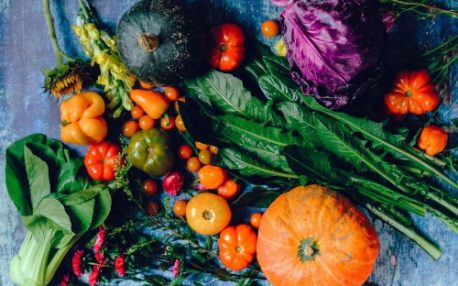Oxidative stress and dysfunction in cellular immunity are considered two important indicators of various liver diseases.
Liver diseases are usually characterised by oxidative stress, inflammation etc. in liver cells. Hence, food items rich in components with anti-oxidant and anti-inflammatory properties may commonly be considered to be liver-friendly18 (Cederbaum et al., 2009).
Also foods that have the ability to prevent metabolic syndrome or lose weight may also come under liver-healthy foods.
This article will discuss various foods that can help you protect your liver and lead a healthy life. Below is a list of liver-friendly foods. They are in no particular order.
Food Items to Keep Your Liver Healthy
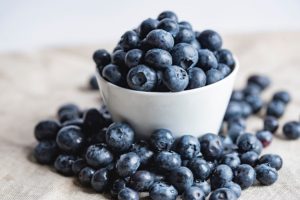
Being one of the popular category of fruits, the effect of berries has been widely studied. Their benefits were observed in cardiovascular, neurodegenerative and age-related diseases. They were also found to be beneficial in cases like obesity and some human cancers17 (mainly oesophageal and gastrointestinal) (Seeram et al., 2008).
A 2010 study19 (Wang et al., 2010) in mice examined the effects of blueberry on cellular immune functions and liver protection. It found that Blueberry treatment reduced oxidative stress in mice by increasing the expression of the major20 (Ade et al., 2009) anti-oxidant components in the liver. It also observed a positive modulation of immune cells.
In more simple terms, Blueberries reduce the oxidative stress on liver cells and protects it from damage.

The Omega-3-fatty acids (or Omega-3 Polyunsaturated Fatty Acids) contained in Fish oil have been shown to reduce lipid accumulation and liver enzyme levels, improve insulin sensitivity, and have anti-inflammatory effects34-36 (Bouzianas et al., 2013; Masterton et al., 2010; Parker et al., 2012).
All of these are directly linked to liver health40 (Gupta et al., 2015).
Fish oil has also been shown to have compelling evidence of beneficial effects against cardiovascular disease, stroke and diabetes37 (Wall et al., 2010).
The human body does not produce omega-3 fatty acids on its own. Hence, it needs to be obtained from fatty fishes like mackerel, tuna, trout, mullet, bluefish, anchovy, herring, salmon, sardines, menhaden and sturgeon that store lipids in their flesh. Fishes like haddock and cod are lean and have less omega-3 acids.
For the average individual, American Heart Association (AHA) recommends an average of at least two servings (3.5 oz/serve) of fatty fish per week38 (Meyer, 2011).
For children, the World Health Organization recommends consumption of at least 400 mg per 10 kg bodyweight omega-3 each day, while the International Society for the Study of Fatty Acids and Lipids suggests 350-750 mg per 10 kg of body weight39 (Lee, 2013).
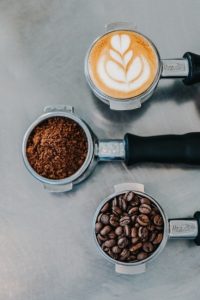
Any list of liver-friendly food items will have coffee. Numerous studies have been performed to confirm the positive effects of coffee on liver health. While the exact mechanism by which this happens is not conclusive yet, there is general consensus within the medical community regarding the positive effects.
A 2014 review2 (Chen et al., 2014) found coffee to have anti-oxidative, anti-inflammatory, anti-fibrotic and anti-carcinogenic effects (for liver). These may help prevent or reverse Non-Alcoholic Fatty Liver Disease (NAFLD).
A 2014 review3 (Morisco et al., 2014) notes that experimental studies on the positive effects of coffee on liver health suggests that coffee consumption reduces fat accumulation and collagen deposition in the liver. It also promotes antioxidant capacity as well as modulation of the gene and protein expression of several inflammatory mediators in the body. It showed that coffee consumption led to an improvement in subjects with diseases like hepatic steatosis and fibrosis. It also led to a reduction in the effects of cirrhosis and the risk of liver cancer.
Similarly, many other studies also have indicated that coffee has protective effects on liver and that the consumption of coffee is associated with decreased risk of liver diseases. Some even suggest coffee as a non-pharmacological tool for primary and secondary prevention of chronic liver diseases4-7 (Szántová et al., 2016; Masterton et al., 2010; Saab et al., 2013; Muriel et al., 2009).
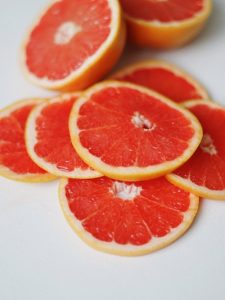
Grapefruit is a member of the citrus family that is used in many countries as a traditional medicine due to its anti-microbial, anti-fungal, anti-inflammatory, anti-oxidant and anti-viral properties. It is also used as an astringent (something that contracts the skin to help reduce bleeding or as a cosmetic to make the skin less oily) solution and as a preservative agent8.
Grapefruit juice is an excellent source of many phytochemicals and nutrients that contribute to an overall healthy diet. It contains significant levels of vitamin C, folic acid, phenolic acid, potassium, calcium, iron, limonoides, terpenes, monoterpenes, and D-glucaric acid. These are beneficial to the health in various ways9.
Studies10 (Monroe et al., 2007) over time have suggested that grapefruits may play an active role in cellular regeneration, cholesterol reduction, detoxifying process, maintenance of heart health, treatment of rheumatoid arthritis, controlling body weight and cancer prevention.
In this context, the flavonoids in grapefruits have been shown to exhibit protective effects towards the liver by causing a decrease in hepatic triglycerides and plasma and hepatic total cholesterol12 (Seo et al., 2003).
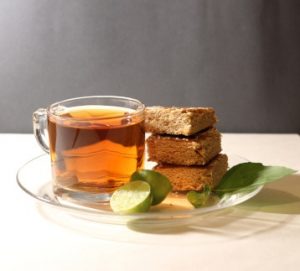
Another popular beverage, good-quality tea may be a very liver-friendly drink. When we say tea, we mean to include Green tea, Black tea or Chamomile tea.
Many studies11 (Madrigal-Santillán et al., 2014) have already indicated the potential anti-oxidative, anti-inflammatory, anti-septic, anti-carcinogenic and anti-viral properties of Green/Black/Chamomile tea.
In this context, studies13-16 (Al-Hashem et al., 2010; Maliakal et al., 2001) have suggested that the phytochemicals and flavonoids in tea led to reduced oxidative stress potentially by positive modification of the antioxidant system.
So long story short, moderate consumption of tea on a daily basis may provide protection against liver-related diseases.

Similar to Blueberry, cranberry also belong to the Vaccinium species in berries.
A study21 (Cheshchevik et al., 2012) was conducted to evaluate the protective effects of cranberry flavonoids against tetra-chloromethane-induced liver mitochondrial damage in rats in 2012. The treatment observed that administration of cranberries (7 mg/kg) was effective in diminishing the toxic effects of tetra-chloromethane. The study found cranberry flavonoids to be effective in prevention of toxic liver injury and liver mitochondria damage. It was more pronounced when used in conjunction with melatonin and succinate.
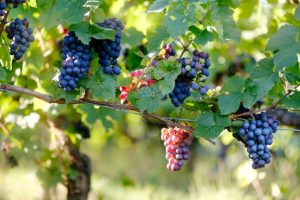
Grape juice and seeds are known to be rich in flavonoids, such as catechins, epicatechins, anthocyanidins, proanthocyanidins and resveratrol compounds. There has been much interest in the potential biological effects of grapes22.
A study23 (Dogan et al., 2011) was conducted in 2012 to evaluate the anti-oxidative and protective role of grape seeds in animal liver against ethanol-induced oxidative stress. The results of the same indicated the role of grape seeds in preventing oxidative damage in the tissues possibly by reducing the lipid oxidation or inhibiting the production of ethanol-induced free radicals in rats.
Organic grapes may be more beneficial than conventional grapes in their liver protective effects. A 2008 study24 (Dani et al., 2008) on the efficacy of organic grape juice in liver protection observed that organic purple grape juice (when compared with conventional purple grape juice) exhibited better anti-oxidative effects against liver diseases.
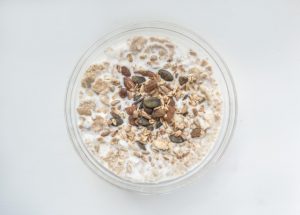
The β-glucans (a type of polysaccharides) in oatmeal may have protective effects against liver diseases.
Research25 (Mantovani et al., 2007) has suggested that β-glucans polysaccharides have anti-viral, anti-parasitic, anti-fungal, anti-microbial, anti-oxidant, anti-clastogenic, anti-genotoxic, anti-tumour, anti-mutagenic and immuno-modulatory properties.
A 2007 study26 (Neyrinck et al., 2007) was conducted in mice regarding the protective effects of β-glucans on the liver. The study indicated positive results and suggested a potential for the immuno-modulatory properties of β-glucans to be related to lowering of inflammation in the liver cells.
Another study27 (Sugiyama et al., 2009) in rats was conducted in 2009 with similar objectives observed a protective action through an anti-oxidant mechanism.
This is a comparatively new item in this list and a recent field of study so it still require more research to be ruled completely in its favour.
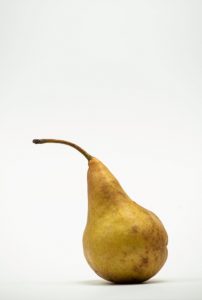
Also known as Cactus pear fruit, this fruit belongs to the genus Opuntia species.
Apart from being used for conditions like wounds and fatigue, this fruit has also been traditionally used for treating many diseases including liver diseases, ulcers, glaucoma and dyspnoea28.
Research29 (Madrigal-Santillán et al., 2013) has pointed towards the anti-oxidant and anti-clastogenic properties of this fruit. It has been found to induce significant reduction in oxidative stress in subjects (which were mice).
A randomized study30 (Wiese et al., 2004) was conducted on 64 healthy adults back in 2004 to observe the effect of prickly pear fruit extract on hangovers caused by alcoholic beverages. Hangovers are largely caused by inflammation. It was found that the extract has a moderate effect on reducing hangover symptoms by inhibiting the action of inflammatory mediators in the body.
Studies have also observed that prickly pear fruits demonstrated an anti-genotoxic effect by reducing the damage to the genetic material of the liver and to the bone marrow caused by toxins.
It is the opinion from scientific groups that these anti-carcinogenic effects classify prickly pear fruits as a liver-protective food31-32 (Brahmi et al., 2011).
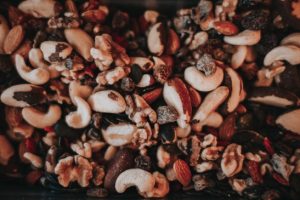
Most nuts like walnuts, pine nuts, almonds, cashews, hazelnuts, macadamia nuts, pecans and pistachios have a high fat content that can increase your HDL (also known as “Good Cholesterol”) and lower your LDL (also called “Bad Cholesterol”).
They are also rich in vitamin-E (an anti-oxidant), fibre, phytosterols and polyphenols. These components can make a positive change to not just your liver, but your overall health40 (Gupta et al., 2015).
A longitudinal dietary composition study41 of six months in 106 patients showed that tree nuts (especially Walnuts) improved liver function tests (LFTs) in patients with NAFLD (Non-Alcoholic Fatty Lever Disease).
Alternately, in a study45 (Han et al., 2014) among Korean population, it was found that low consumption of nuts and seeds resulted in a higher risk of NAFLD (Non-Alcoholic Fatty Lever Disease) in males.
Other similar studies42-44 (Sanyal et al., 2010; Casas et al., 2009; Wien et al., 2003) observed that consumption of nuts resulted in improvement in LFTs (Liver Function Test), reduced inflammation and insulin resistance, improvement in BMI and reduction in waste circumference.
Quite the bouquet of benefits, one might say.
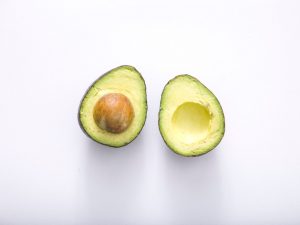
Another fruit from the Berry family, avocados are known to have anti-inflammatory, anti-microbial, analgesic and anti-carcinogenic properties. It has the highest fibre content among fruits and has been implicated to have protective effects against UV damage in skin and eyes and cardiovascular diseases46-49 (Guzmán-Rodríguez et al., 2013; Dreher et al., 2009; Roberts et al., 2009; Rosenblat et al., 2011).
A 2013 study50 (Fulgoni et al., 2013) that analysed the results from the National Health and Nutrition Examination Survey (NHANES) 2001-2008 indicated that avocado consumption was associated with improved weight, improved overall diet quality and nutrient intake, reduced waist circumference and BMI, higher HDL (AKA “Good Cholesterol”) and decreased risk of metabolic syndrome. These effects are linked to reducing the risk of liver diseases.
The dietary fibre in avocado may help in maintaining insulin sensitivity and reduction in fat absorption. This may help prevent40 (Gupta et al., 2015) development of NAFLD (Non-Alcoholic Fatty Lever Disease).
A study51 (Naveh et al., 2002) in rats observed a strong negative correlation between fat deposition in the liver and increasing intake of avocado pulp. The rats also seemed to gain less weight and consumed less food overall.
While more evidence that directly evaluates the effect of avocado consumption on NAFLD are still to be found, the high Mono-unsaturated fatty acid (MUFA) content, lipid-lowering, anti-inflammatory, anti-oxidant, high fibre and weight maintenance properties of avocado makes it an excellent candidate for a liver-healthy diet.
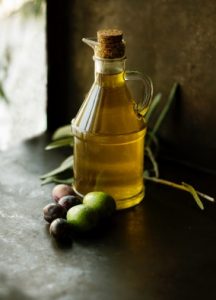
Derived from the Olive fruit, it is the main source of dietary fat in the Mediterranean diet. It contains MUFAs, phenolic compounds and vitamin E that contributes to its fat reduction, anti-inflammatory and anti-oxidant properties – all of which are favourable to liver health52=53 (Covas, 2007; Buckland et al., 2012).
A year-long study54 (Sofi et al., 2010) in human subjects on the benefits of olive oil supplementation on NAFLD (Non-Alcoholic Fatty Lever Disease) observed a significant reduction in liver enzymes and triglycerides along with increased adiponectin levels in subjects when compared to the control group. These factors are beneficial to patients suffering from NAFLD (Non-Alcoholic Fatty Lever Disease).
A 6-month intervention study55 (Nigam et al., 2014) was conducted in Asian Indian males regarding the effect of various cooking oils on fatty liver disease. The results indicated significant decrease in BMI, reduction in fasting insulin, increase in HDL (AKA “Good Cholesterol”) levels and decrease in triglycerides.
Ultrasound results taken at the end of the therapy also showed reduced liver span and a reduction in hepatic steatosis. This suggests that olive oil consumption has a positive association with a decreased risk of fatty liver disease55 (Nigam et al., 2014).
It may be advisable to switch your cooking oil to olive oil in order to reap the benefits. It means that substitution is preferred to supplementation.
This is because olive oil supplementation studies still need to make headway to reach a recommendation on the “how much is good” question.
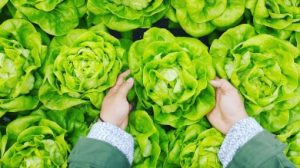
Also called cruciferous vegetables, these include Broccoli, Cauliflower, Kale, Mustard greens, Spinach, Lettuce, Bok Choy and Cress.
They are loaded with vitamins, minerals, fibre, anti-oxidants and many other chemicals that help protect overall health. In fact, these are considered by some as the best food for liver health.
Analysis of a network of case-control studies56 (Bosetti et al., 2012) conducted in Italy and Switzerland suggested evidence favouring beneficial effects of green-leafy vegetables against various types of cancers including that of liver.
Animal studies57-59 (Yoshida et al., 2015; Robbins et al., 2010; Robbins et al., 2011) found Broccoli extract to have induced detoxification and protected liver cells from harmful effects of various foreign substances. Green leafy vegetables reportedly enhanced the production of detoxification enzymes in the body.
Green leafy vegetable like broccoli may also reduce oxidative stress and significantly improve the results of liver function tests60 (Kikuchi et al., 2015).
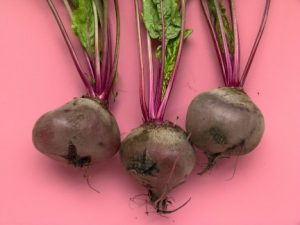
Possessing high-fibre along with anti-oxidant, anti-inflammatory and anti-carcinogenic properties, beetroot may be a useful addition in a liver-friendly diet.
Studies61-64 (Clifford et al., 2015; Kujawska et al., 2009; Szaefer et al., 2014; Vulić et al., 2014) in rats indicated that beetroot juice may reduce (or even reverse the damage done by) oxidative stress. They also enhanced the process of detoxification and exhibited anti-inflammation properties. All of this resulted in an improvement in liver health.
Beetroot is also one of the few vegetables that contain a group of highly bioactive pigments known as betalains. They have been reported to have high anti-oxidant and anti-inflammatory capabilities. Their potential characteristic properties to reduce oxidative stress and chronic inflammation give them a possible role in being used for protection against liver diseases, arthritis or even cancer65 (Clifford et al., 2015).
Also known as St. Mary’s thistle, this fruit has been identified to contain a group of compounds called Silymarin. Silymarin has been reported to have a protective effect on liver11 (Madrigal-Santillán et al., 2014).
Being a potential candidate to be used for oral treatment of toxic liver damage, milk thistle is one of the most investigated plants in the scientific world.
The anti-oxidant property of Silymarin in milk thistle may be used as a protective treatment to prevent acute or chronic liver damage66 (Shaker et al., 2010).
It may also stimulate liver cell regeneration and stabilize cell membranes to prevent entry of liver-toxic substances into the system11, 67 (Madrigal-Santillán et al., 2014).
Other Potential Liver-Friendly Foods
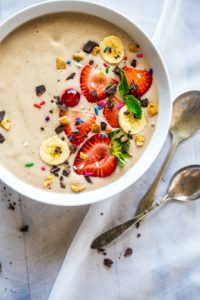
Some other foods that are commonly used for the purpose of promoting liver health include vegetables like sweet potato and yams, fruits like bananas, lemon, cherry, fig, papaya, pomegranate and watermelon and grains like barley, maize, brown rice, wheat and sorghum68 (Guan & He, 2015).
It is to be noted that studies are still in progress regarding these topics. While the aforementioned items may not be used exactly as “treatment” for liver diseases, they may certainly act as an adjuvant (an add-on component) that can help maintain a healthy liver.
Most of them are also extremely healthy foods that can provide much more benefits than just liver health.
References
Wikipedia contributors. (2020, October 16). Liver. In Wikipedia, The Free Encyclopedia. Retrieved 13:20, October 18, 2020, from https://en.wikipedia.org/w/index.php?title=Liver&oldid=983877756.
Chen S, Teoh NC, Chitturi S, Farrell GC. Coffee and non-alcoholic fatty liver disease: brewing evidence for hepatoprotection? J Gastroenterol Hepatol. 2014 Mar;29(3):435-41. doi: 10.1111/jgh.12422. PMID: 24199670. https://pubmed.ncbi.nlm.nih.gov/24199670/. Accessed 18 Oct 2020.
Morisco F, Lembo V, Mazzone G, Camera S, Caporaso N. Coffee and liver health. J Clin Gastroenterol. 2014 Nov-Dec;48 Suppl 1:S87-90. doi: 10.1097/MCG.0000000000000240. PMID: 25291138. https://pubmed.ncbi.nlm.nih.gov/25291138/. Accessed 18 Oct 2020.
Szántová M, Ďurkovičová Z. Káva ako hepatoprotektívny faktor [Coffee as hepatoprotective factor]. Vnitr Lek. 2016 Winter;62(12):990-997. Czech. PMID: 28139128. https://pubmed.ncbi.nlm.nih.gov/28139128/. Accessed 18 Oct 2020.
Masterton GS, Hayes PC. Coffee and the liver: a potential treatment for liver disease? Eur J Gastroenterol Hepatol. 2010 Nov;22(11):1277-83. doi: 10.1097/MEG.0b013e32833cca96. PMID: 20802342. https://pubmed.ncbi.nlm.nih.gov/20802342/. Accessed 18 Oct 2020.
Saab S, Mallam D, Cox GA 2nd, Tong MJ. Impact of coffee on liver diseases: a systematic review. Liver Int. 2014 Apr;34(4):495-504. doi: 10.1111/liv.12304. Epub 2013 Sep 15. PMID: 24102757. https://pubmed.ncbi.nlm.nih.gov/24102757/. Accessed 18 Oct 2020.
Muriel P, Arauz J. Coffee and liver diseases. Fitoterapia. 2010 Jul;81(5):297-305. doi: 10.1016/j.fitote.2009.10.003. Epub 2009 Oct 13. PMID: 19825397. https://pubmed.ncbi.nlm.nih.gov/19825397/. Accessed 18 Oct 2020.
https://scholar.google.com/scholar_lookup?title=Oxidative+stress+and+chronic+degenerative+diseases-a+role+for+antioxidants&author=E+Madrigal-Santill%C3%A1n&author=E+Madrigal-Bujaidar&author=S+Cruz-Jaime&author=MC+Valadez-Vega&author=MT+Sumaya-Mart%C3%ADnez&publication_year=2013&
https://scholar.google.com/scholar_lookup?journal=Int+J+Phytother+Res&title=Pharmacological+potentials+of+citrus+paradise-An+overview&author=V+Gupta&author=K+Kohli&author=P+Ghaiye&author=P+Bansal&author=A+Lather&volume=1&publication_year=2011&pages=8-17&
Monroe KR, Murphy SP, Kolonel LN, Pike MC. Prospective study of grapefruit intake and risk of breast cancer in postmenopausal women: the Multiethnic Cohort Study. Br J Cancer. 2007 Aug 6;97(3):440-5. doi: 10.1038/sj.bjc.6603880. Epub 2007 Jul 10. PMID: 17622247; PMCID: PMC2360312. https://pubmed.ncbi.nlm.nih.gov/17622247/. Accessed 18 Oct 2020.
Madrigal-Santillán E, Madrigal-Bujaidar E, Álvarez-González I, et al. Review of natural products with hepatoprotective effects. World J Gastroenterol. 2014;20(40):14787-14804. doi:10.3748/wjg.v20.i40.14787. https://www.ncbi.nlm.nih.gov/pmc/articles/PMC4209543/. Accessed 18 Oct 2020.
Seo HJ, Jeong KS, Lee MK, Park YB, Jung UJ, Kim HJ, Choi MS. Role of naringin supplement in regulation of lipid and ethanol metabolism in rats. Life Sci. 2003 Jul 4;73(7):933-46. doi: 10.1016/s0024-3205(03)00358-8. PMID: 12798418. https://pubmed.ncbi.nlm.nih.gov/12798418/. Accessed 18 Oct 2020.
https://scholar.google.com/scholar_lookup?journal=Toxicol+Environ+Chem&title=Effects+of+Matricaria+chamomilla+L.+on+lipid+peroxidation,+antioxidant+enzyme+systems,+and+key+liver+enzymes+in+CCl4-treated+rats&author=L+Aksoy&author=NB+S%C3%B6zbilir&volume=94&publication_year=2012&pages=1780-1788&
Al-Hashem FH. Gastroprotective effects of aqueous extract of Chamomilla recutita against ethanol-induced gastric ulcers. Saudi Med J. 2010 Nov;31(11):1211-6. PMID: 21063650. https://pubmed.ncbi.nlm.nih.gov/21063650/. Accessed 18 Oct 2020.
Maliakal PP, Wanwimolruk S. Effect of herbal teas on hepatic drug metabolizing enzymes in rats. J Pharm Pharmacol. 2001 Oct;53(10):1323-9. doi: 10.1211/0022357011777819. PMID: 11697539. https://pubmed.ncbi.nlm.nih.gov/11697539/. Accessed 18 Oct 2020.
https://scholar.google.com/scholar_lookup?journal=Am+J+Pharmacol+Toxicol&title=Hepatoprotective+Activity+of+Aqueous+Ethanolic+Extract+of+Chamomile+capitula+in+Paracetamol+Intoxicated+Albino+Rats&author=AK+Gupta&author=N+Misra&volume=1&publication_year=2006&pages=17-20&
Seeram NP. Berry fruits: compositional elements, biochemical activities, and the impact of their intake on human health, performance, and disease. J Agric Food Chem. 2008 Feb 13;56(3):627-9. doi: 10.1021/jf071988k. Epub 2008 Jan 23. PMID: 18211023. https://pubmed.ncbi.nlm.nih.gov/18211023/. Accessed 18 Oct 2020.
Cederbaum AI, Lu Y, Wu D. Role of oxidative stress in alcohol-induced liver injury. Arch Toxicol. 2009 Jun;83(6):519-48. doi: 10.1007/s00204-009-0432-0. Epub 2009 May 16. PMID: 19448996. https://pubmed.ncbi.nlm.nih.gov/19448996/. Accessed 18 Oct 2020.
Wang YP, Cheng ML, Zhang BF, Mu M, Zhou MY, Wu J, Li CX. Effect of blueberry on hepatic and immunological functions in mice. Hepatobiliary Pancreat Dis Int. 2010 Apr;9(2):164-8. PMID: 20382588. https://pubmed.ncbi.nlm.nih.gov/20382588/. Accessed 18 Oct 2020.
Ade N, Leon F, Pallardy M, Peiffer JL, Kerdine-Romer S, Tissier MH, Bonnet PA, Fabre I, Ourlin JC. HMOX1 and NQO1 genes are upregulated in response to contact sensitizers in dendritic cells and THP-1 cell line: role of the Keap1/Nrf2 pathway. Toxicol Sci. 2009 Feb;107(2):451-60. doi: 10.1093/toxsci/kfn243. Epub 2008 Nov 25. PMID: 19033392. https://pubmed.ncbi.nlm.nih.gov/19033392/. Accessed 18 Oct 2020.
Cheshchevik VT, Lapshina EA, Dremza IK, Zabrodskaya SV, Reiter RJ, Prokopchik NI, Zavodnik IB. Rat liver mitochondrial damage under acute or chronic carbon tetrachloride-induced intoxication: protection by melatonin and cranberry flavonoids. Toxicol Appl Pharmacol. 2012 Jun 15;261(3):271-9. doi: 10.1016/j.taap.2012.04.007. Epub 2012 Apr 14. PMID: 22521486. https://pubmed.ncbi.nlm.nih.gov/22521486/. Accessed 18 Oct 2020.
https://scholar.google.com/scholar_lookup?journal=An+Fac+Med&title=Hepatoprotecci%C3%B3n+antioxidante+de+la+c%C3%A1scara+y+semilla+de+Vitis+vinifera+L.+(uva)&author=M+Sandoval&author=K+Lazarte&author=I+Arnao&volume=69&publication_year=2008&pages=250-259&
Dogan A, Celik I. Hepatoprotective and antioxidant activities of grapeseeds against ethanol-induced oxidative stress in rats. Br J Nutr. 2012 Jan;107(1):45-51. doi: 10.1017/S0007114511002650. Epub 2011 Jun 28. PMID: 21733325. https://pubmed.ncbi.nlm.nih.gov/21733325/. Accessed 18 Oct 2020.
Dani C, Oliboni LS, Pasquali MA, Oliveira MR, Umezu FM, Salvador M, Moreira JC, Henriques JA. Intake of purple grape juice as a hepatoprotective agent in Wistar rats. J Med Food. 2008 Mar;11(1):127-32. doi: 10.1089/jmf.2007.558. PMID: 18361748. https://pubmed.ncbi.nlm.nih.gov/18361748/. Accessed 18 Oct 2020.
Mantovani MS, Bellini MF, Angeli JP, Oliveira RJ, Silva AF, Ribeiro LR. beta-Glucans in promoting health: prevention against mutation and cancer. Mutat Res. 2008 Mar-Apr;658(3):154-61. doi: 10.1016/j.mrrev.2007.07.002. Epub 2007 Aug 3. PMID: 17827055. https://pubmed.ncbi.nlm.nih.gov/17827055/. Accessed 18 Oct 2020.
Neyrinck AM, Mouson A, Delzenne NM. Dietary supplementation with laminarin, a fermentable marine beta (1-3) glucan, protects against hepatotoxicity induced by LPS in rat by modulating immune response in the hepatic tissue. Int Immunopharmacol. 2007 Dec 5;7(12):1497-506. doi: 10.1016/j.intimp.2007.06.011. Epub 2007 Jul 17. PMID: 17920526. https://pubmed.ncbi.nlm.nih.gov/17920526/. Accessed 18 Oct 2020.
Sugiyama A, Suzuki K, Mitra S, Arashida R, Yoshida E, Nakano R, Yabuta Y, Takeuchi T. Hepatoprotective effects of paramylon, a beta-1, 3-D-glucan isolated from Euglena gracilis Z, on acute liver injury induced by carbon tetrachloride in rats. J Vet Med Sci. 2009 Jul;71(7):885-90. doi: 10.1292/jvms.71.885. PMID: 19652474. https://pubmed.ncbi.nlm.nih.gov/19652474/. Accessed 18 Oct 2020.
https://scholar.google.com/scholar_lookup?journal=J+Appl+Phar+Sci&title=Pharmacological+actions+of+Opuntia+ficus+indica:+A+Review&author=M+Kaur&author=A+Kaur&author=R+Sharma&volume=2&publication_year=2012&pages=15-18&
Madrigal-Santillán E, García-Melo F, Morales-González JA, Vázquez-Alvarado P, Muñoz-Juárez S, Zuñiga-Pérez C, Sumaya-Martínez MT, Madrigal-Bujaidar E, Hernández-Ceruelos A. Antioxidant and anticlastogenic capacity of prickly pear juice. Nutrients. 2013 Oct 18;5(10):4145-58. doi: 10.3390/nu5104145. PMID: 24145870; PMCID: PMC3820065. https://pubmed.ncbi.nlm.nih.gov/24145870/. Accessed 18 Oct 2020.
Wiese J, McPherson S, Odden MC, Shlipak MG. Effect of Opuntia ficus indica on symptoms of the alcohol hangover. Arch Intern Med. 2004 Jun 28;164(12):1334-40. doi: 10.1001/archinte.164.12.1334. PMID: 15226168. https://pubmed.ncbi.nlm.nih.gov/15226168/. Accessed 18 Oct 2020.
https://scholar.google.com/scholar_lookup?journal=J+Med+Plants+Res&title=Hepatoprotective+effect+of+cactus+extract+against+carcinogenicity+of+benzo(a)pyrene+on+liver+of+Balb/C+mice&author=D+Brahmi&author=Y+Ayed&author=C+Bouaziz&author=L+Zourgui&author=W+Hassen&volume=5&publication_year=2011&pages=4627-4639&
Brahmi D, Bouaziz C, Ayed Y, Ben Mansour H, Zourgui L, Bacha H. Chemopreventive effect of cactus Opuntia ficus indica on oxidative stress and genotoxicity of aflatoxin B1. Nutr Metab (Lond). 2011 Oct 18;8:73. doi: 10.1186/1743-7075-8-73. PMID: 22008149; PMCID: PMC3214131. https://pubmed.ncbi.nlm.nih.gov/22008149/. Accessed 18 Oct 2020.
Browning LM, Walker CG, Mander AP, West AL, Gambell J, Madden J, Calder PC, Jebb SA. Compared with daily, weekly n-3 PUFA intake affects the incorporation of eicosapentaenoic acid and docosahexaenoic acid into platelets and mononuclear cells in humans. J Nutr. 2014 May;144(5):667-72. doi: 10.3945/jn.113.186346. Epub 2014 Mar 19. PMID: 24647395; PMCID: PMC3985823. https://pubmed.ncbi.nlm.nih.gov/24647395/. Accessed 18 Oct 2020.
Bouzianas DG, Bouziana SD, Hatzitolios AI. Potential treatment of human nonalcoholic fatty liver disease with long-chain omega-3 polyunsaturated fatty acids. Nutr Rev. 2013 Nov;71(11):753-71. doi: 10.1111/nure.12073. Epub 2013 Oct 22. PMID: 24148001. https://pubmed.ncbi.nlm.nih.gov/24148001/. Accessed 18 Oct 2020.
Masterton GS, Plevris JN, Hayes PC. Review article: omega-3 fatty acids – a promising novel therapy for non-alcoholic fatty liver disease. Aliment Pharmacol Ther. 2010 Apr;31(7):679-92. doi: 10.1111/j.1365-2036.2010.04230.x. PMID: 20415840. https://pubmed.ncbi.nlm.nih.gov/20415840/. Accessed 18 Oct 2020.
Parker HM, Johnson NA, Burdon CA, Cohn JS, O’Connor HT, George J. Omega-3 supplementation and non-alcoholic fatty liver disease: a systematic review and meta-analysis. J Hepatol. 2012 Apr;56(4):944-51. doi: 10.1016/j.jhep.2011.08.018. Epub 2011 Oct 21. PMID: 22023985. https://pubmed.ncbi.nlm.nih.gov/22023985/. Accessed 18 Oct 2020.
Wall R, Ross RP, Fitzgerald GF, Stanton C. Fatty acids from fish: the anti-inflammatory potential of long-chain omega-3 fatty acids. Nutr Rev. 2010 May;68(5):280-9. doi: 10.1111/j.1753-4887.2010.00287.x. PMID: 20500789. https://pubmed.ncbi.nlm.nih.gov/20500789/. Accessed 18 Oct 2020.
Meyer BJ. Are we consuming enough long chain omega-3 polyunsaturated fatty acids for optimal health? Prostaglandins Leukot Essent Fatty Acids. 2011 Nov;85(5):275-80. doi: 10.1016/j.plefa.2011.04.010. Epub 2011 May 14. PMID: 21571516. https://pubmed.ncbi.nlm.nih.gov/21571516/. Accessed 18 Oct 2020.
Lee JH. Polyunsaturated Fatty acids in children. Pediatr Gastroenterol Hepatol Nutr. 2013 Sep;16(3):153-61. doi: 10.5223/pghn.2013.16.3.153. Epub 2013 Sep 30. PMID: 24224148; PMCID: PMC3819697. https://pubmed.ncbi.nlm.nih.gov/24224148/. Accessed 18 Oct 2020.
Gupta V, Mah XJ, Garcia MC, Antonypillai C, van der Poorten D. Oily fish, coffee and walnuts: Dietary treatment for nonalcoholic fatty liver disease. World J Gastroenterol. 2015;21(37):10621-10635. doi:10.3748/wjg.v21.i37.10621. https://www.ncbi.nlm.nih.gov/pmc/articles/PMC4588084/. Accessed 18 Oct 2020.
https://scholar.google.com/scholar_lookup?journal=Hepatology&title=Dietary+changes+in+patients+with+non-alcoholic+fatty+liver+disease+are+independently+associated+with+improvement+in+liver+function+tests&author=F+Barrera&author=J+George&author=Poorten+D+van+der&author=George+A+St&volume=56&publication_year=2012&pages=889A-889A&
Sanyal AJ, Chalasani N, Kowdley KV, McCullough A, Diehl AM, Bass NM, Neuschwander-Tetri BA, Lavine JE, Tonascia J, Unalp A, Van Natta M, Clark J, Brunt EM, Kleiner DE, Hoofnagle JH, Robuck PR; NASH CRN. Pioglitazone, vitamin E, or placebo for nonalcoholic steatohepatitis. N Engl J Med. 2010 May 6;362(18):1675-85. doi: 10.1056/NEJMoa0907929. Epub 2010 Apr 28. PMID: 20427778; PMCID: PMC2928471. https://pubmed.ncbi.nlm.nih.gov/20427778/. Accessed 18 Oct 2020.
Casas-Agustench P, López-Uriarte P, Bulló M, Ros E, Cabré-Vila JJ, Salas-Salvadó J. Effects of one serving of mixed nuts on serum lipids, insulin resistance and inflammatory markers in patients with the metabolic syndrome. Nutr Metab Cardiovasc Dis. 2011 Feb;21(2):126-35. doi: 10.1016/j.numecd.2009.08.005. Epub 2009 Dec 22. PMID: 20031380. https://pubmed.ncbi.nlm.nih.gov/20031380/. Accessed 18 Oct 2020.
Wien MA, Sabaté JM, Iklé DN, Cole SE, Kandeel FR. Almonds vs complex carbohydrates in a weight reduction program. Int J Obes Relat Metab Disord. 2003 Nov;27(11):1365-72. doi: 10.1038/sj.ijo.0802411. Erratum in: Int J Obes Relat Metab Disord. 2004 Mar;28(3):459. PMID: 14574348. https://pubmed.ncbi.nlm.nih.gov/14574348/. Accessed 18 Oct 2020.
Han JM, Jo AN, Lee SM, Bae HS, Jun DW, Cho YK, Suk KT, Yoon JH, Ahn SB, Cho YJ, Kim SW, Jang EC. Associations between intakes of individual nutrients or whole food groups and non-alcoholic fatty liver disease among Korean adults. J Gastroenterol Hepatol. 2014 Jun;29(6):1265-72. doi: 10.1111/jgh.12520. PMID: 24955455. https://pubmed.ncbi.nlm.nih.gov/24955455/. Accessed 18 Oct 2020.
Guzmán-Rodríguez JJ, López-Gómez R, Suárez-Rodríguez LM, et al. Antibacterial activity of defensin PaDef from avocado fruit (Persea americana var. drymifolia) expressed in endothelial cells against Escherichia coli and Staphylococcus aureus. Biomed Res Int. 2013;2013:986273. doi:10.1155/2013/986273. https://www.ncbi.nlm.nih.gov/pmc/articles/PMC3844270/. Accessed 18 Oct 2020.
Dreher ML, Davenport AJ. Hass avocado composition and potential health effects. Crit Rev Food Sci Nutr. 2013;53(7):738-750. doi:10.1080/10408398.2011.556759 https://www.ncbi.nlm.nih.gov/pmc/articles/PMC3664913/. Accessed 18 Oct 2020.
Roberts RL, Green J, Lewis B. Lutein and zeaxanthin in eye and skin health. Clin Dermatol. 2009 Mar-Apr;27(2):195-201. doi: 10.1016/j.clindermatol.2008.01.011. PMID: 19168000. https://pubmed.ncbi.nlm.nih.gov/19168000/. Accessed 18 Oct 2020.
Rosenblat G, Meretski S, Segal J, Tarshis M, Schroeder A, Zanin-Zhorov A, Lion G, Ingber A, Hochberg M. Polyhydroxylated fatty alcohols derived from avocado suppress inflammatory response and provide non-sunscreen protection against UV-induced damage in skin cells. Arch Dermatol Res. 2011 May;303(4):239-46. doi: 10.1007/s00403-010-1088-6. Epub 2010 Oct 27. Erratum in: Arch Dermatol Res. 2011 May;303(4):299. PMID: 20978772. https://pubmed.ncbi.nlm.nih.gov/20978772/. Accessed 18 Oct 2020.
Fulgoni VL 3rd, Dreher M, Davenport AJ. Avocado consumption is associated with better diet quality and nutrient intake, and lower metabolic syndrome risk in US adults: results from the National Health and Nutrition Examination Survey (NHANES) 2001-2008. Nutr J. 2013 Jan 2;12:1. doi: 10.1186/1475-2891-12-1. PMID: 23282226; PMCID: PMC3545982. https://pubmed.ncbi.nlm.nih.gov/23282226/. Accessed 18 Oct 2020.
Naveh E, Werman MJ, Sabo E, Neeman I. Defatted avocado pulp reduces body weight and total hepatic fat but increases plasma cholesterol in male rats fed diets with cholesterol. J Nutr. 2002 Jul;132(7):2015-8. doi: 10.1093/jn/132.7.2015. PMID: 12097685. https://pubmed.ncbi.nlm.nih.gov/12097685/. Accessed 18 Oct 2020.
Covas MI. Olive oil and the cardiovascular system. Pharmacol Res. 2007 Mar;55(3):175-86. doi: 10.1016/j.phrs.2007.01.010. Epub 2007 Jan 30. PMID: 17321749. https://pubmed.ncbi.nlm.nih.gov/17321749/. Accessed 18 Oct 2020.
Buckland G, Mayén AL, Agudo A, Travier N, Navarro C, Huerta JM, Chirlaque MD, Barricarte A, Ardanaz E, Moreno-Iribas C, Marin P, Quirós JR, Redondo ML, Amiano P, Dorronsoro M, Arriola L, Molina E, Sanchez MJ, Gonzalez CA. Olive oil intake and mortality within the Spanish population (EPIC-Spain). Am J Clin Nutr. 2012 Jul;96(1):142-9. doi: 10.3945/ajcn.111.024216. Epub 2012 May 30. PMID: 22648725. https://pubmed.ncbi.nlm.nih.gov/22648725/. Accessed 18 Oct 2020.
Sofi F, Giangrandi I, Cesari F, Corsani I, Abbate R, Gensini GF, Casini A. Effects of a 1-year dietary intervention with n-3 polyunsaturated fatty acid-enriched olive oil on non-alcoholic fatty liver disease patients: a preliminary study. Int J Food Sci Nutr. 2010 Dec;61(8):792-802. doi: 10.3109/09637486.2010.487480. Epub 2010 May 13. PMID: 20465434. https://pubmed.ncbi.nlm.nih.gov/20465434/. Accessed 18 Oct 2020.
Nigam P, Bhatt S, Misra A, Chadha DS, Vaidya M, Dasgupta J, Pasha QM. Effect of a 6-month intervention with cooking oils containing a high concentration of monounsaturated fatty acids (olive and canola oils) compared with control oil in male Asian Indians with nonalcoholic fatty liver disease. Diabetes Technol Ther. 2014 Apr;16(4):255-61. doi: 10.1089/dia.2013.0178. PMID: 24625239. https://pubmed.ncbi.nlm.nih.gov/24625239/. Accessed 18 Oct 2020.
Bosetti C, Filomeno M, Riso P, Polesel J, Levi F, Talamini R, Montella M, Negri E, Franceschi S, La Vecchia C. Cruciferous vegetables and cancer risk in a network of case-control studies. Ann Oncol. 2012 Aug;23(8):2198-2203. doi: 10.1093/annonc/mdr604. Epub 2012 Feb 10. PMID: 22328735. https://pubmed.ncbi.nlm.nih.gov/22328735/. Accessed 18 Oct 2020.
Yoshida K, Ushida Y, Ishijima T, Suganuma H, Inakuma T, Yajima N, Abe K, Nakai Y. Broccoli sprout extract induces detoxification-related gene expression and attenuates acute liver injury. World J Gastroenterol. 2015 Sep 21;21(35):10091-103. doi: 10.3748/wjg.v21.i35.10091. PMID: 26401074; PMCID: PMC4572790. https://pubmed.ncbi.nlm.nih.gov/26401074/. Accessed 18 Oct 2020.
Robbins MG, Hauder J, Somoza V, Eshelman BD, Barnes DM, Hanlon PR. Induction of detoxification enzymes by feeding unblanched Brussels sprouts containing active myrosinase to mice for 2 wk. J Food Sci. 2010 Aug 1;75(6):H190-9. doi: 10.1111/j.1750-3841.2010.01713.x. PMID: 20722931. https://pubmed.ncbi.nlm.nih.gov/20722931/. Accessed 18 Oct 2020.
Robbins MG, Andersen G, Somoza V, Eshelman BD, Barnes DM, Hanlon PR. Heat treatment of Brussels sprouts retains their ability to induce detoxification enzyme expression in vitro and in vivo. J Food Sci. 2011 Apr;76(3):C454-61. doi: 10.1111/j.1750-3841.2011.02105.x. PMID: 21535814. https://pubmed.ncbi.nlm.nih.gov/21535814/. Accessed 18 Oct 2020.
Kikuchi M, Ushida Y, Shiozawa H, Umeda R, Tsuruya K, Aoki Y, Suganuma H, Nishizaki Y. Sulforaphane-rich broccoli sprout extract improves hepatic abnormalities in male subjects. World J Gastroenterol. 2015 Nov 21;21(43):12457-67. doi: 10.3748/wjg.v21.i43.12457. PMID: 26604653; PMCID: PMC4649129. https://pubmed.ncbi.nlm.nih.gov/26604653/. Accessed 18 Oct 2020.
Clifford T, Howatson G, West DJ, Stevenson EJ. The potential benefits of red beetroot supplementation in health and disease. Nutrients. 2015 Apr 14;7(4):2801-22. doi: 10.3390/nu7042801. PMID: 25875121; PMCID: PMC4425174. https://pubmed.ncbi.nlm.nih.gov/25875121/. Accessed 18 Oct 2020.
Kujawska M, Ignatowicz E, Murias M, Ewertowska M, Mikołajczyk K, Jodynis-Liebert J. Protective effect of red beetroot against carbon tetrachloride- and N-nitrosodiethylamine-induced oxidative stress in rats. J Agric Food Chem. 2009 Mar 25;57(6):2570-5. doi: 10.1021/jf803315d. PMID: 19292473. https://pubmed.ncbi.nlm.nih.gov/19292473/. Accessed 18 Oct 2020.
Szaefer H, Krajka-Kuźniak V, Ignatowicz E, Adamska T, Baer-Dubowska W. Evaluation of the effect of beetroot juice on DMBA-induced damage in liver and mammary gland of female Sprague-Dawley rats. Phytother Res. 2014 Jan;28(1):55-61. doi: 10.1002/ptr.4951. Epub 2013 Mar 1. PMID: 23450834. https://pubmed.ncbi.nlm.nih.gov/23450834/. Accessed 18 Oct 2020.
Jelena J.Vulić, Tatjana N.Ćebović, Jasna M.Čanadanović-Brunet, Gordana S.Ćetković, Vladimir M.Čanadanović, Sonja M.Djilas, Vesna T. Tumbas Šaponjac. In vivo and in vitro antioxidant effects of beetroot pomace extracts. Journal of Functional Foods. Volume 6, January 2014, Pages 168-175. https://doi.org/10.1016/j.jff.2013.10.003. https://www.sciencedirect.com/science/article/abs/pii/S1756464613002314. Accessed 18 Oct 2020.
Clifford T, Howatson G, West DJ, Stevenson EJ. The potential benefits of red beetroot supplementation in health and disease. Nutrients. 2015;7(4):2801-2822. Published 2015 Apr 14. doi:10.3390/nu7042801. https://www.ncbi.nlm.nih.gov/pmc/articles/PMC4425174/. Accessed 18 Oct 2020.
Shaker E, Mahmoud H, Mnaa S. Silymarin, the antioxidant component and Silybum marianum extracts prevent liver damage. Food Chem Toxicol. 2010 Mar;48(3):803-6. doi: 10.1016/j.fct.2009.12.011. Epub 2009 Dec 23. PMID: 20034535. https://pubmed.ncbi.nlm.nih.gov/20034535/. Accessed 18 Oct 2020.
https://scholar.google.com/scholar_lookup?title=Oxidative+stress+and+chronic+degenerative+diseases-a+role+for+antioxidants&author=E+Madrigal-Santill%C3%A1n&author=E+Madrigal-Bujaidar&author=S+Cruz-Jaime&author=MC+Valadez-Vega&author=MT+Sumaya-Mart%C3%ADnez&publication_year=2013&
Guan YS, He Q. Plants Consumption and Liver Health. Evid Based Complement Alternat Med. 2015;2015:824185. doi:10.1155/2015/824185. https://www.ncbi.nlm.nih.gov/pmc/articles/PMC4499388/. Accessed 18 Oct 2020.
